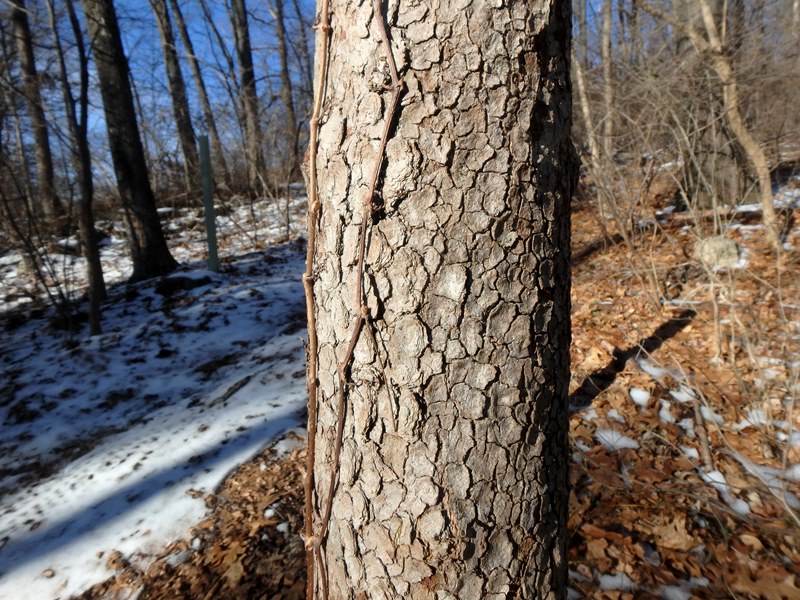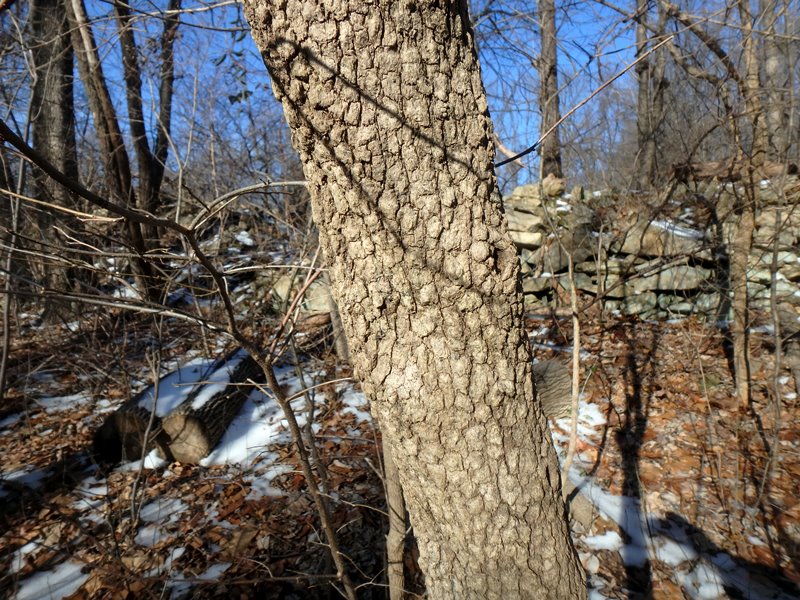Mariton: Cracked Mud Bark
by Tim Burris, Preserve Manager
I grew up where there was a lot of clay in the soil. When our mud puddles dried out, the mud would crack into geometric plates. The drier the mud, the wider and deeper the cracks would get. You have probably seen photos of the kind of mud that I am talking about. We would call it alligator mud because the plates reminded us of the skin of an alligator. (But then we didn’t have a lot of experience with alligators in Michigan.) The deep cracks and slimy mud had a lasting impression on me.

Flowering Dogwood bark
So, when I formally learned about Flowering Dogwood (Cornus florida) I already had an image to relate. My professor called it alligator bark, and I called it cracked mud, but we had the same image in our minds. Of course our mud was red-brown, and the Dogwood’s bark is dark gray. Hopefully you can see the resemblance.

Blackhaw Viburnum
Blackhaw Viburnum (Viburnum prunifolium) has a similar bark to Flowering Dogwood. Blackhaw is very common at Mariton, and we have several large specimens that are about the same diameter as many of our dogwoods. Maybe you can see the “alligator” texture. If anything, Dogwood plates are slightly concave and Blackhaw is convex, but the plates are similar sized and shaped.
I can glance at the shape of the tree, or silhouette, to quickly discern the difference between dogwood and blackhaw. The forms of both species are an artist’s dream, and a sculptor would be hard pressed to come up with such pleasing shapes. The Blackhaw Viburnum is considered a large shrub, and the Flowering Dogwood is considered a small tree, yet they reach similar heights. Both species like some shade and are a lovely addition to any yard, as they add color and texture in all seasons.
